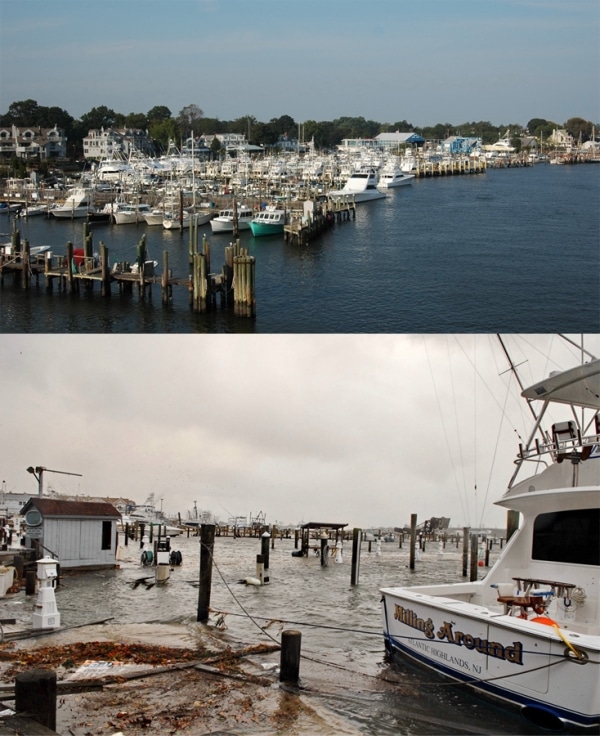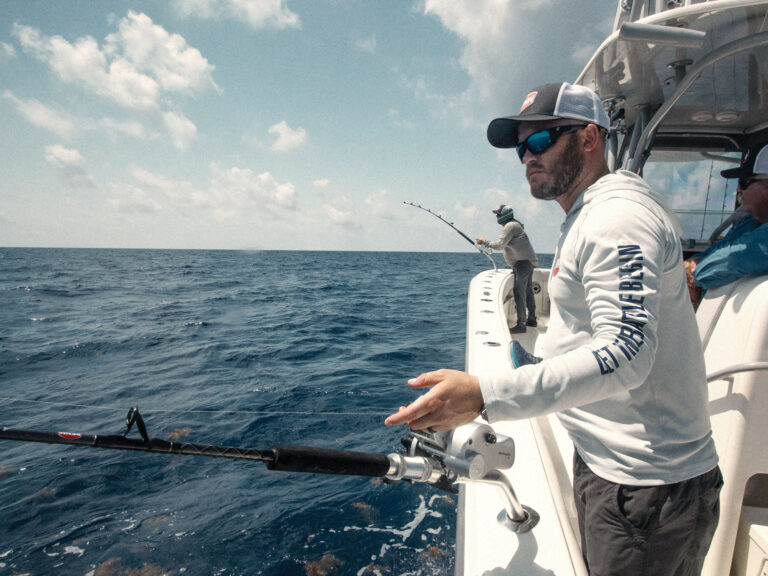Hurricane Sandy left behind a trail of coastal destruction in New York and New Jersey unlike anything the region had experienced before. Almost overlooked was the damage and hardship it caused businesses in the fishing industry. Then on November 16, the Department of Commerce officially determined that under section 308(d) of the Interjurisdictional Fisheries Act (IFA) and section 315 of the Magnuson Stevens Fisheries Conservation Act (MSA), a catastrophic regional fishery disaster has occurred, which provides a basis for Congress to appropriate disaster relief funding to provide grant assistance to affected communities.
Initially there was great concern that recreational fishing businesses and infrastructure would not qualify for assistance due to vagaries in the definition of “fishing community” in the MSA. Fishing groups worked with the state Marine Trades Association in New Jersey (MTA), the New York Fishing Tackle Trades Association, as well as local business owners and regional distributors to put pressure on NOAA Fisheries and Congress to assure that they would indeed qualify.
On November 29, Congressman Frank Pallone, Jr., (D-NJ) a senior member of the House Natural Resources Committee and the Subcommittee on Fisheries, Wildlife, Oceans and Insular Affairs confirmed that recreational fishing infrastructure such as marinas, tackle and bait stores, for-hire fishing vessels and public access points that provide fishing access would be eligible for disaster assistance under the fishery disaster declaration.
“I understand that there has been concern that certain aspects of the recreational fishing sector were not included in the fishery disaster declaration,” Pallone said in his release, adding “my office has been working with the National Oceanic and Atmospheric Administration (NOAA) to confirm that shore-side fishery infrastructure including marinas, tackle and bait stores and boat ramps are eligible for assistance with this declaration.”
This came as a relief, but these businesses were in uncharted territory as to how best to proceed. The data collection process necessary to qualify for assistance is significant and there was no agency in place ready to organize affected businesses and act as a clearing house for the financial data that was required. NOAA Fisheries flew representatives into the affected areas to interview some business owners, but they did so without an accurate and up-to-date contact list which had been offered up by local stakeholders. “We talked to so many of our business owners on the ground in New York and New Jersey, entire party boat fleets and many tackle shops who were off the beaten track that were never contacted by NOAA,” said RFA managing director Jim Hutchinson.
“After sitting and listening to a NOAA presentation at the Mid Atlantic Fishery Management Council, our worst fears were realized as these federal bureaucrats admitted to having no real contact with regional stakeholder groups and adding that they were not even asking questions about financial impacts due to lost business since the storm,” Hutchinson said.
Almost immediately following the federal disaster declaration, local stakeholders began working up a more viable solution for coordinating data collection on the ground, engaging both the New York and New Jersey Sea Grant operations to act as project management. “Given the fact that Sea Grant is a nationwide network of university-based programs, administered through NOAA, that works directly with our local stakeholders, it makes the most sense that NOAA would engage their Sea Grant network,” Hutchinson said, adding “regrettably, NOAA decided to run their own independent special ops on this one and totally left out their Sea Grant staff as well as the local stakeholders.”
“Given that the economics of fishing is part of Sea Grant’s ongoing outreach programs, bringing these local representatives into the disaster relief effort for fishing communities should’ve been a no-brainer, but apparently not for NOAA,” Hutchinson said.
By mid-December, the New Jersey Department of Environmental Protection (NJDEP) began sending out surveys to both the for-hire sector and the local tackle shops, while MTA began reaching out to marina owners. Today, thanks to the efforts of local stakeholders working together with the RFA and the NJDEP, the staff at the New Jersey Sea Grant is helping coordinate the data collection efforts on the ground in the Garden State. Just before the holidays, New York Sea Grant began collecting business information from within New York’s marine district, while also working in conjunction with the New York Department of Environmental Conservation (NYDEC).

Above, photos from before and after a marina located on the Manasquan River in Brielle.
Getting the word out to affected businesses has ultimately been achieved through the trades associations, regional tackle distributors including Regal Fishing Products and the Folsom Tackle Corporation, and also through direct contact with business owners. In the process a true picture of the impact of the storm on recreational fishing is only now coming to light. Not only did hundreds of shore area small businesses sustain physical damage to their facilities, the loss of business since the storm has been extensive. Many businesses already stressed by the weak economy and high fuel prices are hanging in the balance while waiting for Congress to act to approve funds for SBA loans and direct disaster relief.
Late on Friday, December 28, the U.S. Senate passed a bill by a 62-32 majority including 50 democrats and 12 republicans that would give $60.4 billion toward rebuilding and cleanup after Hurricane Sandy, but it appears unlikely that the House will vote on the legislation before adjourning for the year. As of New Year’s Eve of 2012, the bill providing for general disaster relief along with legislation authorizing specific funding for the fisheries disaster declarations made by the Secretary of Commerce in 2012 (including Superstorm Sandy) remain bottled up in a dysfunctional Congress that has been unable to unite to avert the “Fiscal Cliff” that has been staring them in the face for many months.
Lost in much of the political rhetoric in recent weeks is the actual lawful determination made under both section 308(d) of the IFA and section 315 of MSA with regard to a fisheries disaster declaration. Partisan grandstanding has focused attention on $150 million in aid for fisheries disasters in Alaska, Mississippi and New England including in the Sandy relief bill, without proper understanding of the Department of Commerce’s requirements under the federal law.
While NOAA representatives run their own secret ground game and the House of Representatives continues its posturing along the precipice, hundreds of small businesses in the recreational fishing industry are holding their collective breath and waiting for help to arrive.









